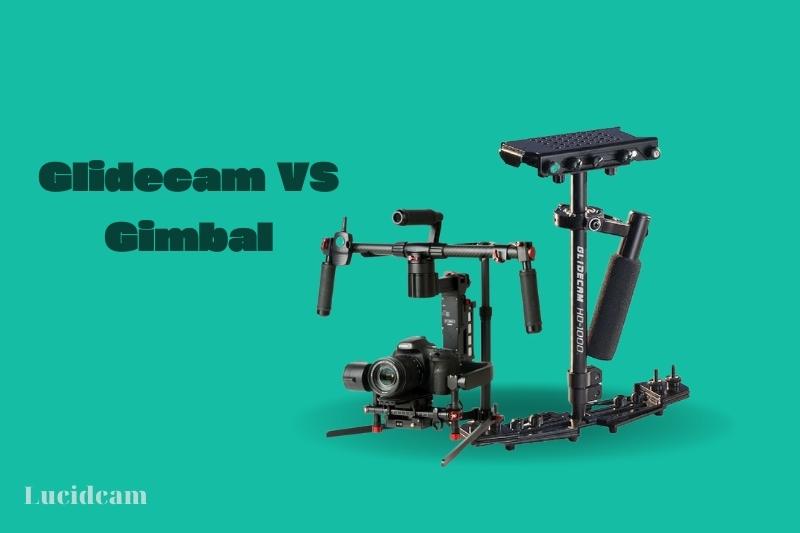The technological advancements in stabilizing equipment for video cameras has brought about new equipment to accompany the newest generation of small video cameras. The Glidecam and the gimbal are two pieces of stabilizing equipment often seen together at demonstrations and conventions to show off the capabilities of the equipment.
In this blog, we will take a look at the similarities and differences between Glidecam Vs Gimbal
Table of Contents
What is a Glidecam?
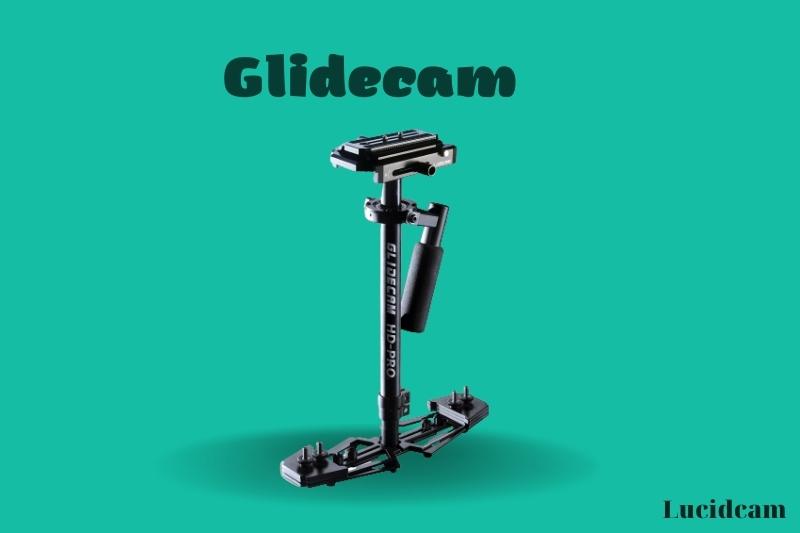
Their website states that the Glidecam Smooth Shooter is renowned for its cost-effective stabilization system, which can support cameras up to 10 pounds. This claim is true, and it supports most cameras on the market, as they weigh less than 3 lbs. It promises steady footage regardless of whether you’re running around the block or traveling on a badly-constructed road.
What is a Gimbal?
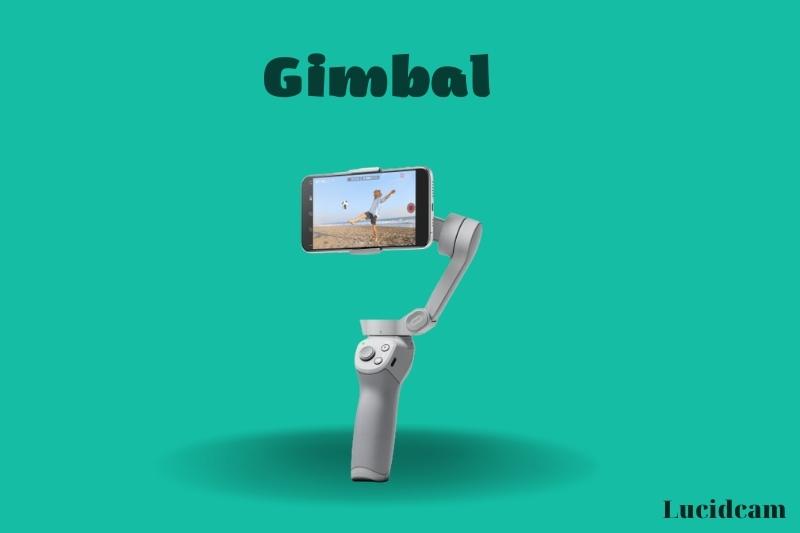
A gimbal, which is very similar to a Glidecam is a pivoting device that allows videographers rotate the camera along one axis. A 3 axes Gimbal is well-known for recording footage along three axes. These are pitch, roll, and yaw. The gimbal covers every direction that a camera can move. ‘Pitch’ allows for up and downward movement, while ‘yaw” moves the camera left and right. The ‘roll’ axis can be used for long distances. Your videos will appear stable in all shooting motions, which is great for action movies.
Glidecam Vs Gimbal
It might be difficult for a novice to distinguish between the two devices. There are some elements that can help users choose between the two.
Image Stabilization
This is the most important thing to think about when purchasing an image stabilizer device. We could still survive without your camera’s built in image stabilization system, even if it lacks this feature. Gimbal is the winner for its ability to produce exceptionally stable footage, even at a weight of 5.5 pounds.
Videographers can get amazing results even when attaching a 5-pound camera. The Glidecam, on the other hand, ranks lower even if it connects a lighter camera. Glidecam’s weight limit is easily bypassed by most people who purchase an alternative. The performance is much better than Glidecam.
Panning
The Glidecam’s panning performance was worth mentioning. The Glidecam feels more natural and comfortable than other cameras, which is reflected in your footage. You don’t have to add any effects to give your footage a natural panning look. Professional videographers can replicate the Glidecam’s panning effect using a manual pattern. It wins again due to its superior image stabilization.
Photographers, mostly amateurs and not professionals, don’t have the time or patience to create patterns. Understanding the basics of your stabilizer is an overwhelming task. Even if you’re not a professional, it is worth using your Glidecam to save precious minutes.
The latest 3-axis gimbals have many modes that provide a similar pan effect as well as other effects. If your budget is available, it’s worth looking into innovative devices.
Performance
Glidecam’s gradual decline in popularity after the release of gimbals was due to their manual use. Innovation has made people less productive, which has resulted in higher expectations for modern gadgets. Gimbals allow you to relax by giving you control over the camera’s movements via various buttons. A gimbal provides better image stabilization while a Glidecam can cause slight distortion which is annoying for perfectionists.
Many people expect you to use a longer lens to capture high-quality videos. The built-in advantages of your favorite gimbal are another reason to impress the crowd. This allows you to easily rebalance your camera system while still using your lens. A heavier lens will not affect the settings of your camera rig.
Your Glidecam is a nuisance when you switch your lens. It takes a lot of time to re-center it. The Glidecam is compatible with heavier lenses and cameras. However, videographers should avoid it due to its complex functionality.
Battery Life
It can be affected if your scale weighs more than the gimbal. Glidecam lets you hold twice the size of your camera without worrying about running out of batteries. The Glidecam holds the camera only while you do the actual work.
There is no need for an external power source. This is not only cost-effective but also allows for extended shooting times. A gimbal would mean that you had to stop the shooting process in the event of a dead battery. However, a Glidecam lets you stay active for as long or as you like. You won’t mind doing the manual labor if your camera is lightweight.
Glidecam Stabilizers
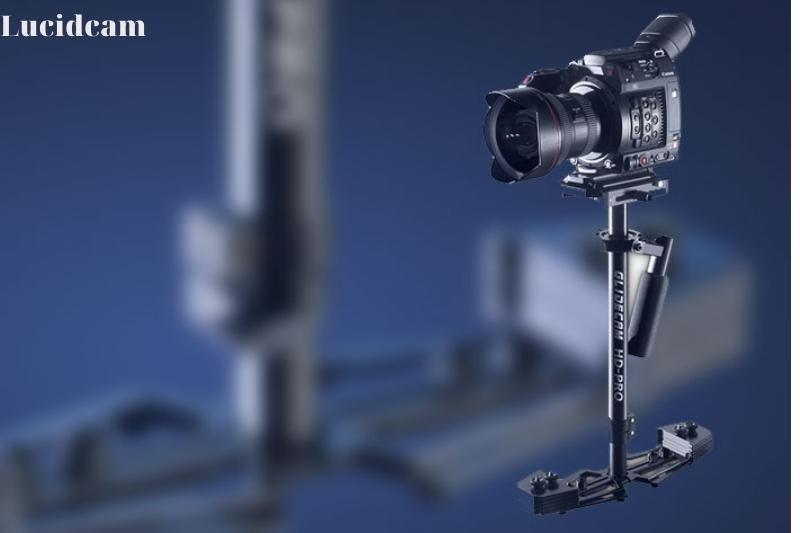
Glidecam is a brand but has – like Steadicam – become synonymous with camera stabilizers that balance cameras with weights and don’t contain any electronics.
Glidingcams use counterweights to balance their camera on a short pole that revolves around a central axis.
To keep the camera and lens set you are trying to balance on top of it, the heavier they are, the more weights that will be added to the bottom.
To keep the camera still while moving, adjust the distance between the handle and the center pole.
Glidecams have no electronic parts and rely entirely on gravity and the movement of the user to ensure smooth shots. It takes practice to master this skill.
How To Use A Stabilizer Of The Type Glidecam For Best Results
- Glidecams are used by holding the handle in one hand and gently moving the center pole around with the other.
- This is a great way to control your Glidecam. This allows you to do faster tilts and pans than with a gimbal.
- It also has some advantages.
- It doesn’t run low on battery.
- Second, it is safer to avoid getting dirt or sand stuck in your motors. This is great if your stabilizer was brought with you to the beach or desert.
- Use a Glidecam-type stabilizer to keep your body straight and not bounce around too much. This will ensure you get the best results.
Glidingcam Pros And Cons
- Glidecam-type stabilizers offer a lot of benefits. They don’t contain any electronic parts. You won’t be stuck with an inoperable motor.
- They don’t require batteries and can be charged without need. You don’t have to worry about running out of battery during an important shoot.
Gimbal Stabilizers
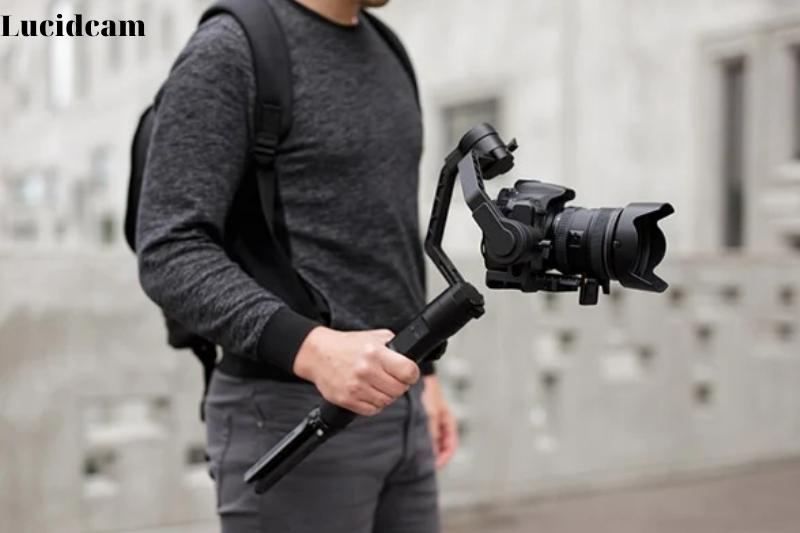
Gimbals are motorized stabilizers that require a battery and may be programmed to do a variety of fascinating movements.
This might make it sound as if gimbals would be the best option. But don’t be fooled. There are many things to take into consideration when selecting a stabilizer
Gimbals combine small arms and motors to stabilize your footage. Place your camera on a small plate, and then balance it.
When moving around the motors, make sure your camera is balanced and free of shakes.
Gimbals come as a variety of sizes and weights. There are small, lightweight options for smartphones or GoPros that you can carry with one hand, and large rigs for cinema cameras.
DJI’s camera drones have gimbals that can stabilize video and photos.
Gimbals With 2-Axis Or 3-Axis Motors
Gimbals can be either 2-axis or 3-axis.
You can control tilting (up or down), and rolling (when the handle is moved horizontally).
You can also control the pan with a 3-axis gimbal, i.e. The movement from one side to the other.
You can choose the movements you require for a particular video shoot.
How To Use The Gimbal To Get The Best Results
A joystick is attached to the handle of the gimbal. Sometimes you can program the gimbal via your smartphone’s app. This is great for hyperlapses.
Gimbals are controlled in this manner, so they often produce a more mechanical motion than Glidecams. Glidecams can be controlled more directly.
You must still practice using a gimbal or your footage could easily look swimming-like.
To avoid footage that bobs up or down, bend your knees while moving with the Glidecam.
if you are interested in knowing the comparison of Steadicam and Gimbal, You can check out here:
How Do You Choose The Right DSLR Stabilizer?
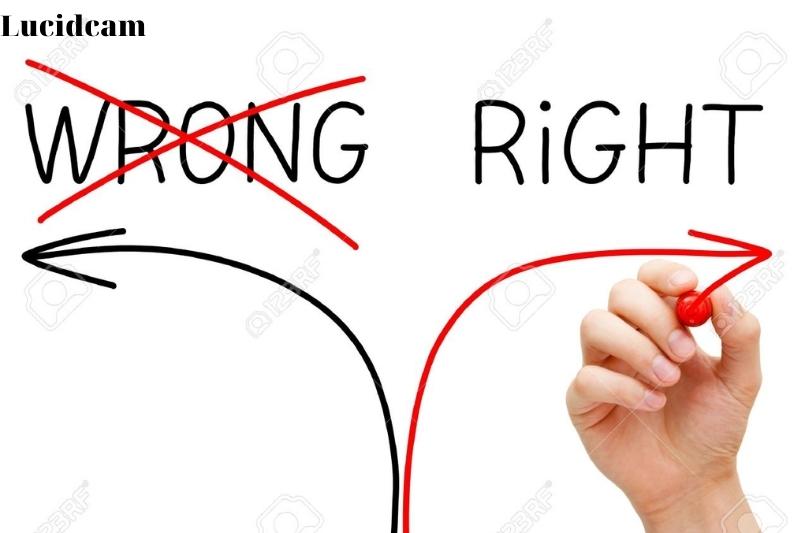
There are many types and varieties of DSLR stabilizers. All of these stabilizers are designed to help you carry your camera around while filming, but not make the shot look shaky.
Each DLSR stabilizer is different in design. This allows the operator to take the shots they want while using their preferred camera and equipment.
Before you make your final decision on a DSLR stabilizer, you should consider several factors.
Features
Check your gear’s compatibility first. You should ensure that the stabilizer you plan to purchase is compatible with the DLSR stabilizer. Some brands make sure their products are compatible with certain brands of cameras, while others equip their products with the necessary means to work with all brands.
Compatibility can also mean being able to switch between your stabilizer and other equipment. Many filmmakers use more than one stabilizer with their cameras. Monopods and tripods are just a few examples. You can switch between them easily, which will help you decide which one is best for you.
Durability
A DLSR stabilizer is a significant investment. Stabilizers are designed to withstand the abuse of filmmaking. Your gears are more susceptible to bumps and drops from moving around. These can cause damage to your gears, so make sure they are able to withstand them on a regular basis.
Ergonomics
When choosing the best stabilizer, ease of use is also important. Better shots are possible when you feel comfortable with your equipment. The stabilizer should be well-designed so that users can use the camera without worrying about it not working. The stabilizer for DSLRs should enhance the camera’s use and not hinder it.
Price
Although it is true that the most expensive products tend to be the ones with the best features and materials available, this is not always the case. Even though some stabilizers are more expensive than the newer models, they still perform exceptionally well and have a large price difference.
There may be products that are priced lower because of the release of newer models. These items are still worth looking at, since a lower price does not necessarily indicate poor quality or performance. This could be a ploy to increase sales of older models that will likely decline when newer ones are released.
Don’t be fooled by a low price, especially if the company is reputable. These products may perform better than premium products of lesser-known brands, which may not be as reliable.
Should I Choose Glidecam or Gimble?
Glidecams are a great choice for people with heavier cameras (most astrophotography camera weigh more than 6 pounds) and long shooting hours. A gimbal is a better choice if you want to relax and enjoy the game. The latter is more flexible, has a better system and offers superior performance.
We hope that you found this comparison between Glidecam and gimbal useful in making your final decision. Because the price is nearly the same, your choice will depend more on your labor preferences than your budget.
FAQs
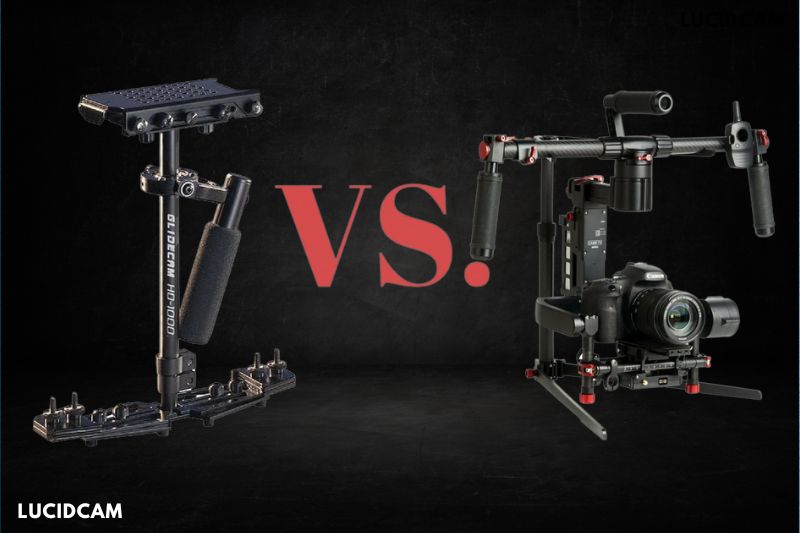
Is a glidecam a gimbal?
The highly superior Glidecam Centurion is the world’s smallest and lightest 3-axis motorized gimbal, and it holds the record for being the class leader in this regard. The Glidecam Centurion is compatible with the vast majority of video cameras, digital single-lens reflex cameras, and mirrorless cameras that weigh between one and five pounds (. 45 to 2.26 kg.)
What is glidecam used for?
With the GLIDECAM SMOOTH SHOOTER system, you will be able to shoot while walking, running, going up and down stairs, shooting from moving vehicles, and traveling over uneven terrain without experiencing any camera wobble or instability.
Is a gimbal necessary for video?
Gimbals are excellent for taking still photographs at odd angles and are typically regarded as important pieces of equipment for videographers.
Are Glidecams good?
The disadvantage of this is that it is up to the user to ensure that their setup is properly balanced. Glidecams, on the other hand, are a fantastic technique to stabilize footage, and many videographers prefer using glide cams rather than electronic gimbals.
Is it worth buying a gimbal?
If you are a professional photographer or videographer, you should unquestionably consider making an investment in a camera gimbal since they provide stability and lightweight operation you require when you need smooth-handled video footage.
Do photographers use gimbals?
A gimbal that is precisely balanced will allow you to tilt the camera in any direction at the touch of a finger. This particular tripod head offers both flexibility and stability, despite its relatively light load capacity. Gimbal heads are most commonly utilized in the photography industry; however, they are also applicable in the videography industry.
Conclusion
In short, the Glidecam and the gimbal work in much the same way when stabilizing a camera. The movement of both of these handheld stabilizers is controlled by a three-axis system, which allows the equipment to follow the movements of the operator. This helps to keep the camera steady and takes away the jitters and shakes that often accompany hand-held video recording.
We hope this article will be helpful for you. Thank you for reading!
